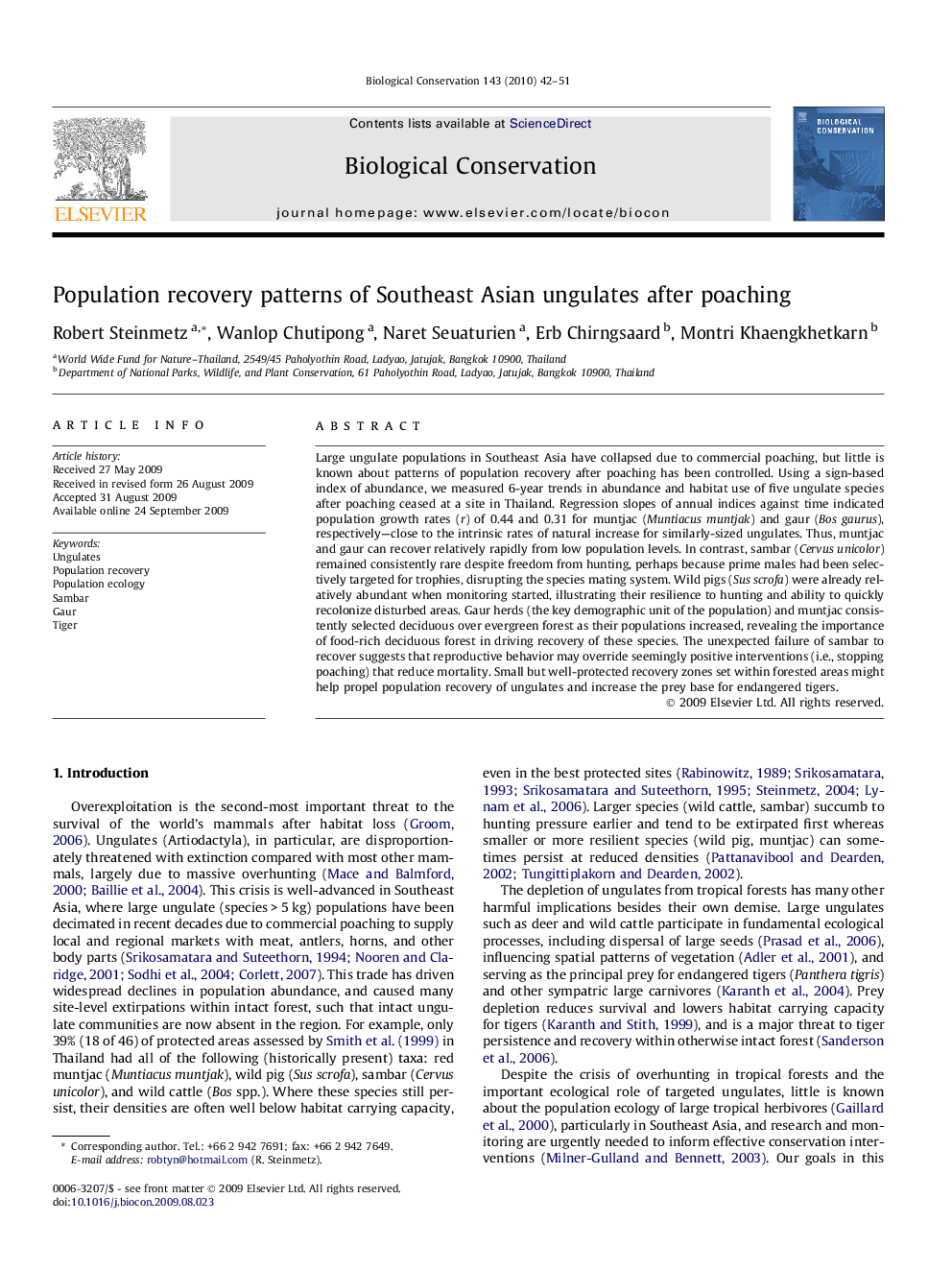| کد مقاله | کد نشریه | سال انتشار | مقاله انگلیسی | نسخه تمام متن |
|---|---|---|---|---|
| 4386052 | 1304555 | 2010 | 10 صفحه PDF | دانلود رایگان |

Large ungulate populations in Southeast Asia have collapsed due to commercial poaching, but little is known about patterns of population recovery after poaching has been controlled. Using a sign-based index of abundance, we measured 6-year trends in abundance and habitat use of five ungulate species after poaching ceased at a site in Thailand. Regression slopes of annual indices against time indicated population growth rates (r) of 0.44 and 0.31 for muntjac (Muntiacus muntjak) and gaur (Bos gaurus), respectively—close to the intrinsic rates of natural increase for similarly-sized ungulates. Thus, muntjac and gaur can recover relatively rapidly from low population levels. In contrast, sambar (Cervus unicolor) remained consistently rare despite freedom from hunting, perhaps because prime males had been selectively targeted for trophies, disrupting the species mating system. Wild pigs (Sus scrofa) were already relatively abundant when monitoring started, illustrating their resilience to hunting and ability to quickly recolonize disturbed areas. Gaur herds (the key demographic unit of the population) and muntjac consistently selected deciduous over evergreen forest as their populations increased, revealing the importance of food-rich deciduous forest in driving recovery of these species. The unexpected failure of sambar to recover suggests that reproductive behavior may override seemingly positive interventions (i.e., stopping poaching) that reduce mortality. Small but well-protected recovery zones set within forested areas might help propel population recovery of ungulates and increase the prey base for endangered tigers.
Journal: Biological Conservation - Volume 143, Issue 1, January 2010, Pages 42–51